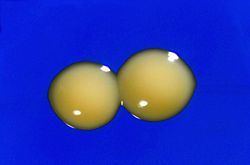Order Actinomycetales Family Mycobacteriaceae | Phylum Actinobacteria Suborder Corynebacterineae Genus Mycobacterium Rank Species | |
 | ||
People also search for Mycobacterium canariasense | ||
Mycobacterium cosmeticum is a rapidly growing mycobacterium that was first isolated from cosmetic patients and sites performing cosmetic procedures.
Contents
Dr. Robert Cooksey and Dr. Jacobus H. de Waard, along with their research teams in the Centre for Disease Control and Preventions’s Mycobacterial lab in the USA and Instituto de Biomedicina in Caracas, Venezuela discovered the M. cosmeticum bacterium, which can thrive in salons, healthcare and clinic settings. This species is the newest identifiable mycobacterial organism to thrive in these settings, joining other rapid growing species, Mycobacterium fortuitum, Mycobacterium chelonae, and Mycobacterium abscessus, that have been found in previous outbreaks. These organisms are very persistent in the environment and can survive unusually harsh environmental conditions. The antibiotic therapy can go on for many months or even years. It very often requires an incision to remove the abscess.
Etymology: cosmeticum, referring to cosmetics.
It is closely related to Mycobacterium frederiksbergense, Mycobacterium hodleri, Mycobacterium diernhoferi, and Mycobacterium neoaurum.
Description
Microscopy
Colony characteristics
Physiology
Differential characteristics
or on media containing 5% (w/v) NaCl, the utilization of trehalose or citrate, but not sorbitol, as a sole carbon source.
